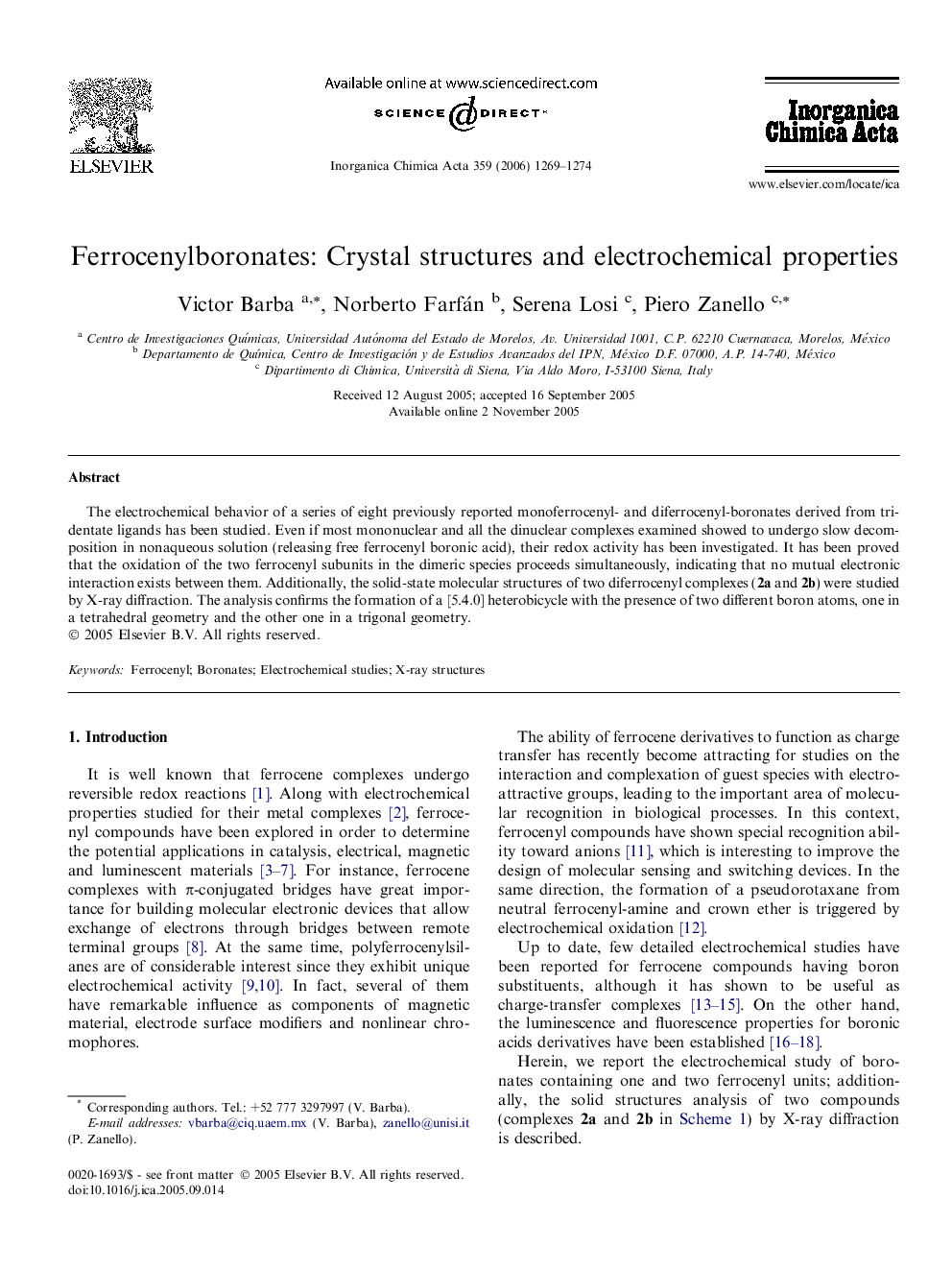| Article ID | Journal | Published Year | Pages | File Type |
|---|---|---|---|---|
| 1308069 | Inorganica Chimica Acta | 2006 | 6 Pages |
The electrochemical behavior of a series of eight previously reported monoferrocenyl- and diferrocenyl-boronates derived from tridentate ligands has been studied. Even if most mononuclear and all the dinuclear complexes examined showed to undergo slow decomposition in nonaqueous solution (releasing free ferrocenyl boronic acid), their redox activity has been investigated. It has been proved that the oxidation of the two ferrocenyl subunits in the dimeric species proceeds simultaneously, indicating that no mutual electronic interaction exists between them. Additionally, the solid-state molecular structures of two diferrocenyl complexes (2a and 2b) were studied by X-ray diffraction. The analysis confirms the formation of a [5.4.0] heterobicycle with the presence of two different boron atoms, one in a tetrahedral geometry and the other one in a trigonal geometry.
Graphical abstractThe electrochemical behaviors of a series of mono- and di-ferrocenylboronates derived from tridentate ligands and ferrocenylboronic acid have been studied. Inspite of the appearance of separate anodic steps, binuclear ferrocenyl complexes undergo the simultaneous oxidation of the two ferrocene subunits, thus indicating that no electronic communication exists between them. In fact, in nonaqueous solvents, most complexes slowly release ferrocenylboronic acid.Figure optionsDownload full-size imageDownload as PowerPoint slide
